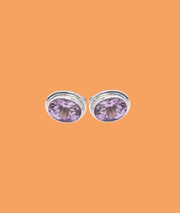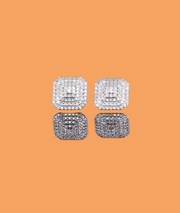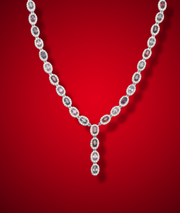Jewelry is a valuable and cherished possession for many people. Whether it's an engagement ring, a family heirloom, or a trendy piece of fashion jewelry, we want to keep our jewelry looking as good as new for as long as possible. A crucial part of proper jewelry care and maintenance is polishing. A high-quality polishing cloth can help maintain the shine and beauty of your jewelry by removing dirt, grime, and tarnish. But with so many types of polishing cloths available, how do you choose the right one for your jewelry? In this article, we'll help you understand the different types of polishing cloths, the factors to consider when selecting one, and how to properly use and care for your chosen cloth. With the right polishing cloth, you can keep your jewelry looking its best and extend its life for years to come.
Proper care and maintenance are essential to keep your jewelry in good condition. Over time, jewelry can become dull, tarnished, or scratched from exposure to the elements or regular wear. Dirt, oils, and other substances can also accumulate on the surface of jewelry, causing it to lose its shine and sparkle.
Regular cleaning and polishing can help remove these impurities and restore the luster and beauty of your jewelry. This not only makes your jewelry look better but also extends its life by preventing long-term damage. Neglecting to care for your jewelry can result in irreversible damage, which may require costly repairs or even replacement. By taking care of your jewelry with regular cleaning and maintenance, you can ensure that it remains a cherished and valuable item for years to come.
Different types of polishing cloths and their materials
There are several types of polishing cloths available, each with their unique features and benefits. Here are some of the most common types of polishing cloths and their materials:
Microfiber cloths: Microfiber cloths are made of tiny, ultra-fine synthetic fibers that are tightly woven together to create a soft, absorbent cloth. These cloths are gentle and non-abrasive, making them ideal for cleaning delicate jewelry such as pearls, opals, and other soft gemstones.
Muslin cloths: Muslin cloths are made of lightweight, unbleached cotton and are often used for cleaning silver and gold jewelry. These cloths have a slightly rough texture that can help remove tarnish and surface dirt without scratching the metal.
Chamois cloths: Chamois cloths are made of leather from the chamois animal, which is known for its soft and absorbent texture. These clothes are gentle and effective for polishing and cleaning delicate jewelry, such as fine gold and silver pieces.
Flannel cloths: Flannel cloths are made of a soft and fuzzy cotton fabric and are commonly used for cleaning and polishing all types of jewelry, including diamonds and gemstones. They are gentle and non-abrasive, making them suitable for regular use on a variety of jewelry types.
Terry cloth: Terry cloth is a soft, absorbent fabric with small loops that can help remove dirt and grime. It is ideal for cleaning gold and silver jewelry, but may not be as suitable for more delicate pieces.
Each type of polishing cloth has its unique features and benefits, and the best option depends on the type of jewelry you need to clean and polish.
II. Factors to Consider When Choosing a Polishing Cloth
When choosing a polishing cloth for your jewelry, there are several factors to consider to ensure you select the right one. Here are some important factors to keep in mind:
Material: The type of material the cloth is made of is an essential factor to consider. As mentioned earlier, different materials have unique properties that make them suitable for different types of jewelry. It's important to choose a cloth that is compatible with the jewelry you want to clean and polish.
Abrasiveness: Some clothes may be more abrasive than others, which can cause scratches or other damage to delicate jewelry. It's important to select a cloth that is gentle enough to avoid damaging your jewelry, while still being effective at removing dirt and grime.
Size: The size of the cloth is also an essential factor to consider. A small cloth may be challenging to use on larger pieces of jewelry, while a larger cloth may be too bulky for smaller items. Consider the size of your jewelry and choose a cloth that is appropriate.
Brand: Not all polishing cloths are created equal, and some brands may offer better quality or more effective cleaning power than others. Do some research to find a reputable brand that offers high-quality polishing cloths.
Purpose: Some clothes are designed for specific purposes, such as removing tarnish or cleaning delicate stones. Make sure you choose a cloth that is suitable for the purpose you have in mind.
By considering these factors, you can choose a polishing cloth that is compatible with your jewelry and provides the best results for your cleaning and polishing needs.
III. Tips for Using a Polishing Cloth
Here are some tips on preparing your jewelry for polishing and proper techniques for using a polishing cloth:
Preparing the Jewelry for Polishing: Before using a polishing cloth, make sure that your jewelry is free from any dust, dirt, or other debris. You can use a soft-bristled brush or a damp cloth to remove any dirt or debris. If your jewelry has tarnish or other discoloration, you may need to use a specialized cleaning solution before using a polishing cloth.
Choosing the Right Cloth: Once your jewelry is clean and dry, you can choose the right polishing cloth for the job. As mentioned earlier, different types of jewelry require different types of clothes, so be sure to choose one that is compatible with your specific piece of jewelry.
Applying the Polish: Gently rub the polishing cloth over the surface of the jewelry, making sure to apply even pressure. Use a circular motion to cover the entire surface of the jewelry. If your jewelry has intricate or hard-to-reach areas, you can use a soft-bristled brush to reach those areas.
Polishing the Jewelry: Continue rubbing the polishing cloth over the jewelry until you achieve the desired level of shine. Be sure to use a clean section of the cloth as you work, and avoid using excessive force or pressure, as this can scratch or damage the surface of the jewelry.
Storing the Jewelry: Once you've finished polishing your jewelry, be sure to store it properly to prevent tarnishing or other damage. You can store your jewelry in a jewelry box, a soft cloth bag, or another type of protective container.
By following these tips, you can ensure that your jewelry is properly prepared for polishing and that you use your polishing cloth correctly to achieve the best possible results.
Conclusion
In conclusion, choosing the right polishing cloth for your jewelry is an important step in ensuring that your jewelry stays in great condition for years to come. With the right cloth, you can remove dirt and tarnish, restore shine and luster, and protect your jewelry from scratches and other damage. By taking the time to choose the right cloth for your specific type of jewelry and following proper polishing techniques, you can keep your jewelry looking its best and enjoy it for many years to come. So be sure to invest in a high-quality polishing cloth and make it a regular part of your jewelry care routine.









